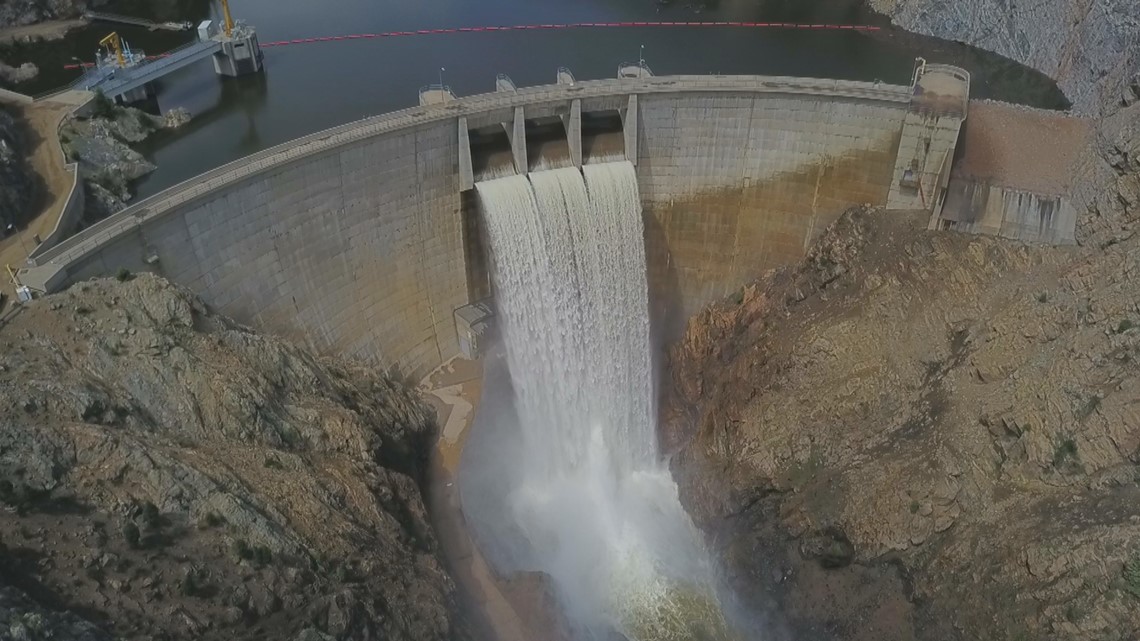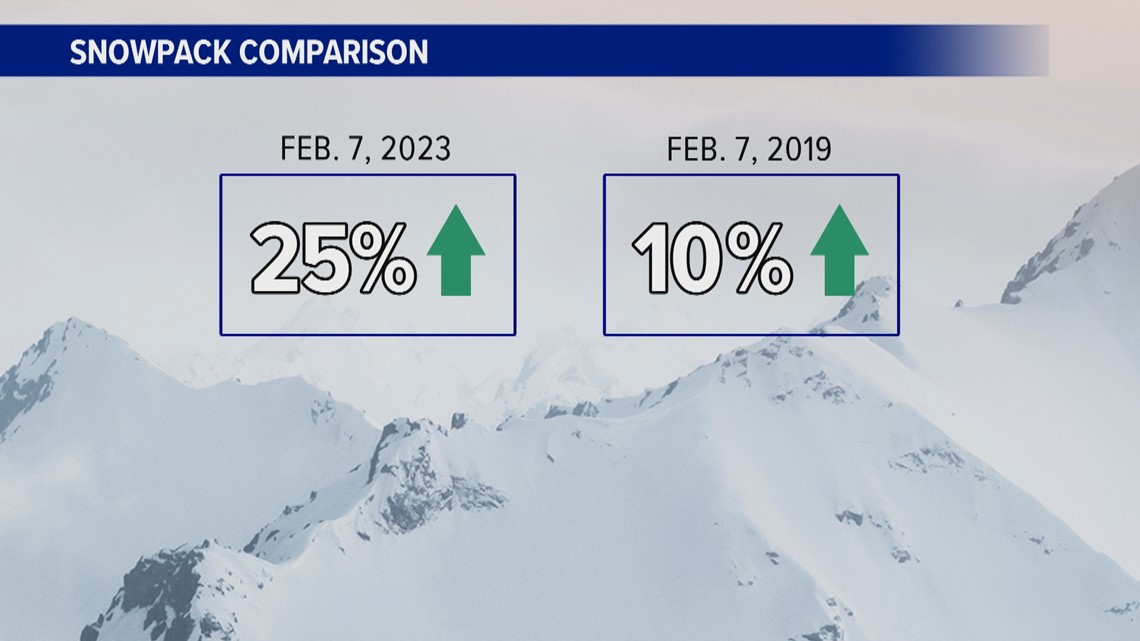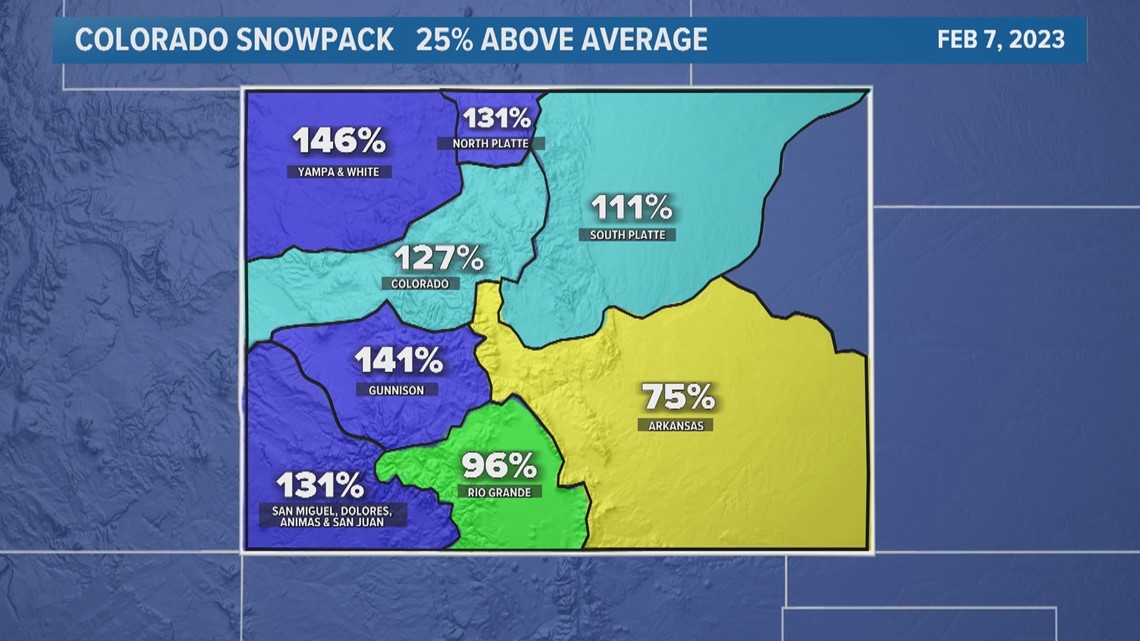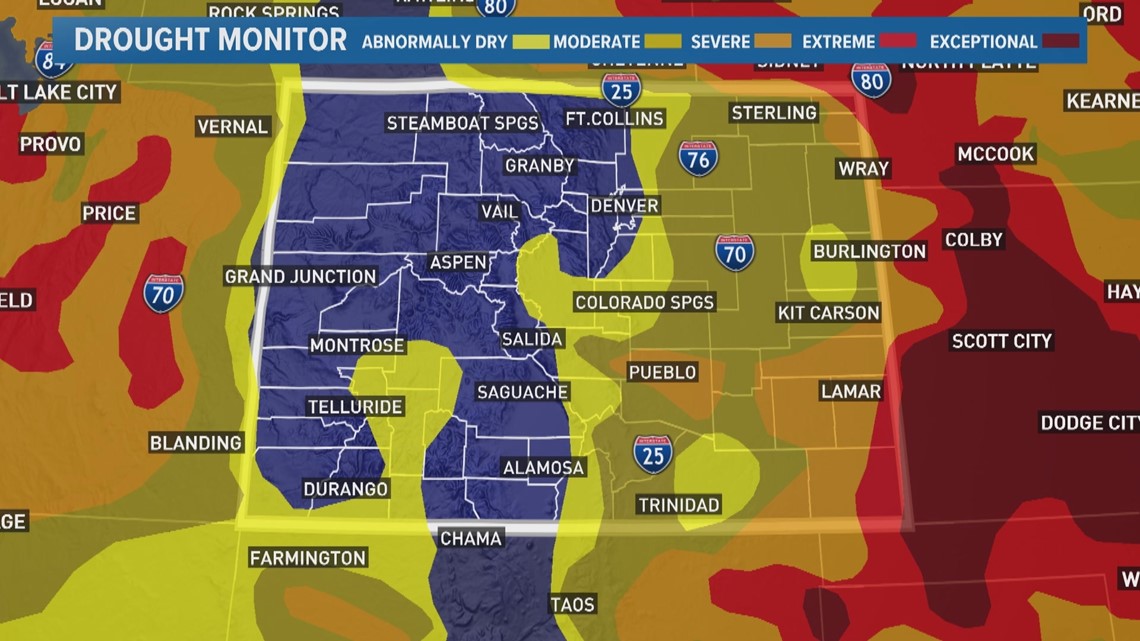DENVER — The spring runoff in 2019 was big. Water even spilled over the top of Strontia Springs Dam in Littleton. That was the last time that happened, and it was also the last time that drought levels in Colorado hit zero.
Even though that drought-free stretch only lasted from late May to late August, the 2019 snow season was a blueprint for just how fast drought can be eradicated, at least in Colorado.


So far this season, there’s more snow than there was in 2019, so Colorado is on pace to see some more active spillways this spring, but it’s not in the bag yet.
Let’s compare the two snow seasons.
On Feb. 7 this year, the statewide snowpack is 25% above average. In 2019, it was 12% above average.


But the 2019 season was really just getting its engine warmed up in the first week of February. You might remember the historic avalanche cycle that hit the state in March. Colorado’s snowpack doubled from Feb. 7 to April 5.
That could happen again this year, but that peak level where the snowpack topped out in 2019 is rare. It’s only happened five times in the past 30 years.
Besides 2019, the Colorado statewide snowpack average peaked above 21 inches of snow-water equivalent (SWE) in 2011, 2008, 1997, 1995 and 1993.
In 2019, the snowpack was evenly distributed throughout the state, with every basin above average to start February. So far this season, that has not been the case, with the bulk of the snowpack to the west.


That snowmelt will not help the drought in southeast Colorado, so to see the drought get completely erased statewide, the snowpack in the Arkansas River headwaters will have to be significantly above average over the next two months.
There was 36% of Colorado in some level of drought condition as of Feb. 7.


The snowpack in 2019 also reached its peak level later in the spring, which helps ensure a bigger runoff. It peaked at 21.1" of SWE on March 26, but the snow stayed consistent enough to keep the SWE above 20.9" until April 15.
The runoff can lack luster if the season peaks early, even if that peak is well above average. One recent example is 2017. That year, snowpack reached a peak of 18.4" of SWE, which is well above the average of 16.9", but it happened nearly a full month early on March 11.
As a result, a few of the reservoirs that were expected to spill, like Strontia Springs, did not breach the top of the dam.
SUGGESTED VIDEOS: Colorado Climate

